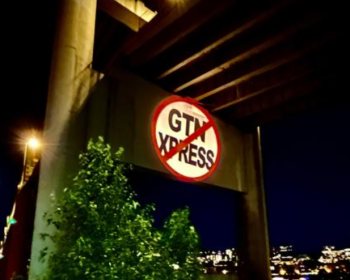Hawaii PUC Envisions Diminished Utility Ownership of Generation Facilities
Open gallery

On April 28, Hawaii’s Public Utility Commission outlined a bold new vision for the role of electric utilities in the state. Rejecting the Hawaiian Electric Companies’ (HECO Companies’) Integrated Resource Planning Report for being “in part, a series of unrelated capital projects without strategic focus on the clear issues facing the utilities,” the PUC ordered the consolidated utilities to file a Power Supply Improvement Plan (PSIP) that establishes the steps that the utilities will take to expeditiously retire inefficient fossil-fuel generation facilities, increase generation flexibility, adopt new technologies like demand response and energy storage, and enable the integration of diverse renewable energy resources.
To provide direction to the HECO Companies, the PUC issued a guidance document, Commission’s Inclinations on the Future of Hawaii’s Electric Utilities, which set out policy measures to modernize the generation, transmission and distribution systems, and recommended policy and regulatory reforms to reach Hawaii’s goal of 40% renewable energy by 2030.
This post focuses on the significance of one of the Hawaii PUC’s proposed reforms, the diminishing role of electric utilities as owners and operators of generation facilities. Other aspects of the PUC’s guidance, including rate modifications to better account for distributed generation, will be covered in the coming weeks.
The Times They Are A-Changin’
In the Commission’s Inclinations, the PUC submitted that it will consider whether it is reasonable and in the public interest to preclude the HECO Companies from ownership of new generation to combat what the PUC identified as the financial conflicts inherent in utility ownership of generation. The Commission forecast that “the HECO Companies’ traditional role as owner and operator of a fleet of fossil generation units will diminish over time as old, inefficient utility generation is retired and if new renewable and fossil generation is developed solely by [Independent Power Producers].” The Commission reasoned that the utilities both lack the expertise in developing new renewable facilities and are unable to economically compete with Independent Power Producers in developing new generation.
According to the policies proposed by the PUC, the HECO Companies’ future will center on the utilities’ role as the owners and managers of a transmission and distribution grid system. According to the PUC, the HECO Companies are well situated to develop and operate the modern grid infrastructure required to integrate and deliver the large quantities of renewable energy envisioned by Hawaii’s aggressive Renewable Portfolio Standard. Serving in that capacity, the HECO Companies’ role would be analogous to that of the Independent System Operators (ISOs) on the mainland, managing the bulk power system by dispatching energy resources, while maintaining reliability and minimizing costs.
The Commission suggested that the financial impact on the HECO Companies under this proposal would be limited by the fact that modern electric system will require substantial investments in transmission and distribution infrastructure, investments that may be included in the utilities’ rate base and thus earn a rate of return.
Some Things Change, Some Stay The Same
The HECO Companies filed their PSIP on August 26 in accordance with the Commission’s order, but failed to address the Commission’s suggestions regarding utility ownership of new generation assets. The PSIP outlined the utilities’ plan to comply with Hawaii’s Renewable Portfolio Standard goals, proposing considerable investments in renewable energy resources, modifications to their transmission and distribution systems, upgrades to the utilities’ existing thermal generation fleets and the development of infrastructure to support the importation, distribution and combustion of liquefied natural gas (LNG). The PSIP leaves the question of whom the HECO Companies expect to be making these significant investments, the issue brought up in Commission’s guidance document, unanswered.
It seems likely that the HECO Companies would prefer to maintain their position as owners and operators of a large portion of the generation fleet, because that is the role their business model is designed around. If that is the case, then the opacity of the PSIP regarding investments in new generation infrastructure is probably intentional on the part of the utilities. The utilities’ decision to avoid the issue of generation ownership in the PSIP might set up a battle over who should be responsible for developing new renewable and fossil generation in the future.
The PUC is currently evaluating the HECO Companies’ PSIP for consistency with the Commission’s orders and the state’s energy goals. Stripping the utilities of their traditional role as large-scale owners and operators of generation assets would redefine the function of an electric utility in Hawaii, and might bear on the future actions of policymakers and regulators on the mainland.
As Hawaii Goes, So Goes the Nation
The upheaval in Hawaii might have implications for the electric industry in the continental United States. The factors that drove Hawaii’s PUC to propose the significant policy reforms in the Commission’s Inclinations—increasing public pressure to transition to clean energy coupled with renewable energy technology costs that are competitive with or cheaper than fossil generation—will likely soon be present in other states. As renewable energy technologies begin to displace traditional forms of generation on the mainland, policymakers, regulators and stakeholders in the electricity industry will look to draw from Hawaii’s experience. In that sense, the decisions that Hawaii’s PUC makes now might inform the shape of the US electricity industry for years to come.
More Green Energy Institute Stories
Green Energy is located in Wood Hall on the Law Campus.
email gei@lclark.edu
Director
Carra Sahler
Green Energy
Lewis & Clark Law School
10101 S. Terwilliger Boulevard MSC
Portland OR 97219

